Solar eclipse of April 8, 1921
An annular solar eclipse occurred on April 8, 1921. A solar eclipse occurs when the Moon passes between Earth and the Sun, thereby totally or partly obscuring the image of the Sun for a viewer on Earth. An annular solar eclipse occurs when the Moon's apparent diameter is smaller than the Sun's, blocking most of the Sun's light and causing the Sun to look like an annulus (ring). An annular eclipse appears as a partial eclipse over a region of the Earth thousands of kilometres wide. Annularity was visible from northern Scotland, northwestern tip of Norway, and islands in the Arctic Ocean in Russian SFSR.
| Solar eclipse of April 8, 1921 | |
|---|---|
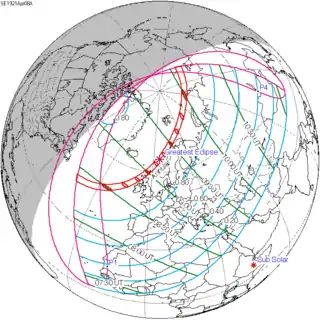 Map | |
| Type of eclipse | |
| Nature | Annular |
| Gamma | 0.8869 |
| Magnitude | 0.9753 |
| Maximum eclipse | |
| Duration | 110 sec (1 m 50 s) |
| Coordinates | 64.5°N 5.6°E |
| Max. width of band | 192 km (119 mi) |
| Times (UTC) | |
| Greatest eclipse | 9:15:01 |
| References | |
| Saros | 118 (63 of 72) |
| Catalog # (SE5000) | 9330 |
Related eclipses
Solar eclipses 1921–1924
This eclipse is a member of a semester series. An eclipse in a semester series of solar eclipses repeats approximately every 177 days and 4 hours (a semester) at alternating nodes of the Moon's orbit.[1]
| Solar eclipse series sets from 1921–1924 | ||||
|---|---|---|---|---|
| Descending node | Ascending node | |||
| 118 | April 8, 1921 Annular |
123 | October 1, 1921 Total | |
| 128 | March 28, 1922 Annular |
133 | September 21, 1922 Total | |
| 138 | March 17, 1923 Annular |
143 | September 10, 1923 Total | |
| 148 | March 5, 1924 Partial |
153 | August 30, 1924 Partial | |
Saros 118
This eclipse is a part of Saros cycle 118, repeating every 18 years, 11 days, containing 72 events. The series started with partial solar eclipse on May 24, 803 AD. It contains total eclipses from August 19, 947 AD through October 25, 1650, hybrid eclipses on November 4, 1668, and November 15, 1686, and annular eclipses from November 27, 1704, through April 30, 1957. The series ends at member 72 as a partial eclipse on July 15, 2083. The longest duration of total was 6 minutes, 59 seconds on May 16, 1398.
| Series members 62–72 occur between 1901 and 2083: | ||
|---|---|---|
| 62 | 63 | 64 |
 Mar 29, 1903 |
 Apr 8, 1921 |
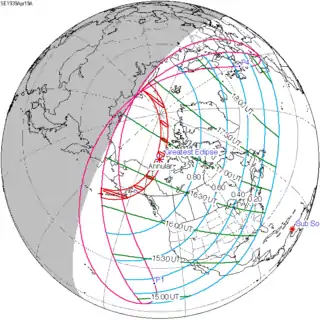 Apr 19, 1939 |
| 65 | 66 | 67 |
 Apr 30, 1957 |
 May 11, 1975 |
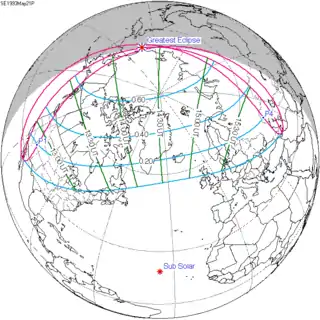 May 21, 1993 |
| 68 | 69 | 70 |
 Jun 1, 2011 |
 Jun 12, 2029 |
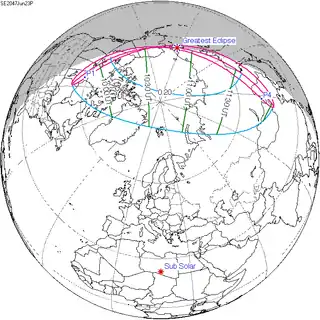 Jun 23, 2047 |
| 71 | 72 | |
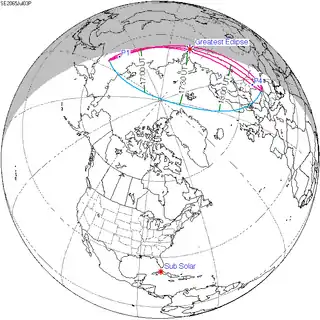 Jul 3, 2065 |
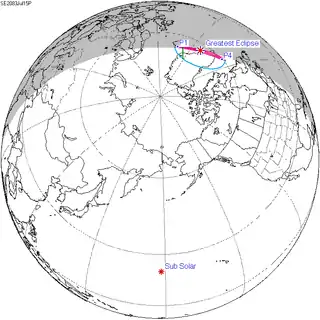 Jul 15, 2083 | |
Metonic series
The metonic series repeats eclipses every 19 years (6939.69 days), lasting about 5 cycles. Eclipses occur in nearly the same calendar date. In addition, the octon subseries repeats 1/5 of that or every 3.8 years (1387.94 days).
| 22 eclipse events, progressing from north to south between April 8, 1902, and August 31, 1989: | ||||
|---|---|---|---|---|
| April 7–8 | January 24–25 | November 12 | August 31-September 1 | June 19–20 |
| 108 | 114 | 116 | ||
 April 8, 1902 |
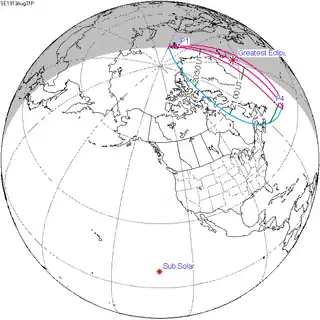 August 31, 1913 |
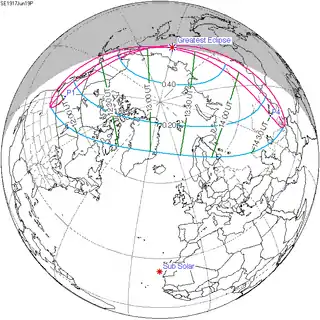 June 19, 1917 | ||
| 118 | 120 | 122 | 124 | 126 |
 April 8, 1921 |
 January 24, 1925 |
 November 12, 1928 |
 August 31, 1932 |
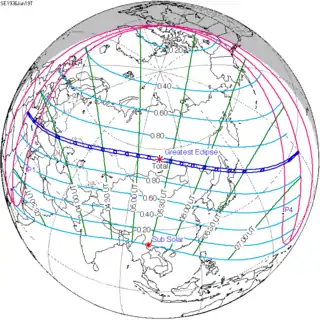 June 19, 1936 |
| 128 | 130 | 132 | 134 | 136 |
 April 7, 1940 |
 January 25, 1944 |
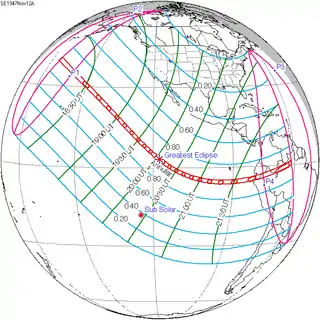 November 12, 1947 |
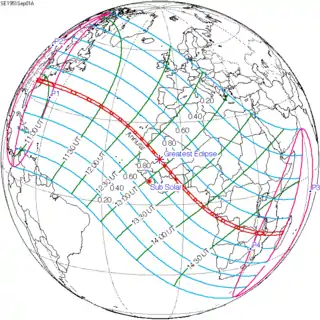 September 1, 1951 |
 June 20, 1955 |
| 138 | 140 | 142 | 144 | 146 |
 April 8, 1959 |
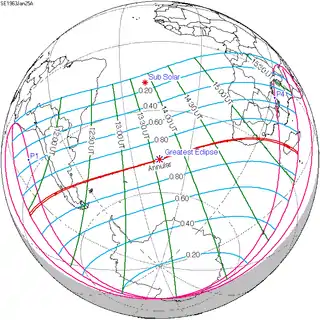 January 25, 1963 |
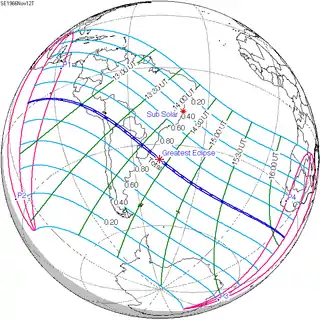 November 12, 1966 |
 August 31, 1970 |
 June 20, 1974 |
| 148 | 150 | 152 | 154 | |
 April 7, 1978 |
 January 25, 1982 |
 November 12, 1985 |
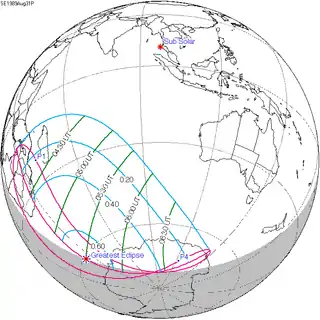 August 31, 1989 | |
Notes
- van Gent, R.H. "Solar- and Lunar-Eclipse Predictions from Antiquity to the Present". A Catalogue of Eclipse Cycles. Utrecht University. Retrieved 6 October 2018.
References
- Earth visibility chart and eclipse statistics Eclipse Predictions by Fred Espenak, NASA/GSFC
.jpg.webp)

